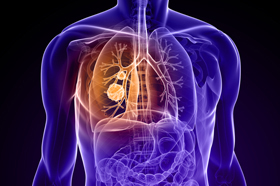FDG PET/CT Lowers Risk of Death in Patients with Resectable Non-Small Cell Lung Cancer
 A study published in Radiology has found that the use of preoperative PET/CT is associated with lower risk of death in patients with stage IIIA–IIIB non–small cell lung cancer compared with those without preoperative PET/CT.
A study published in Radiology has found that the use of preoperative PET/CT is associated with lower risk of death in patients with stage IIIA–IIIB non–small cell lung cancer compared with those without preoperative PET/CT.
The retrospective study used data from the Health and Welfare Data Center established by Taiwan’s Ministry of Health and Welfare. Patients with resectable stage I–IIIB NSCLC who underwent thoracic surgery from January 1, 2009, to December 31, 2018, from the Taiwan Cancer Registry were included.
In the matched cohort, 6754 patients (3349 men and 3405 women) underwent PET/CT and 6754 (3362 men and 3405 women) did not. In adjusted analysis, patients with stage IIIA or IIIB NSCLC and preoperative PET/CT had a lower risk of death versus those without PET/CT (for stage IIIA: hazard ratio [HR] = 0.90 [95% CI: 0.79, 0.94], P = .02; for stage IIIB: HR = 0.80 [95% CI: 0.71, 0.90], P , .01). There was no improvement in a lower risk of death for patients with stage I–II NSCLC (after multivariable adjustment, the HR was 1.19 [95% CI: 0.89, 1.30], P = .65).
In the paper, the authors noted that prior randomized clinical trials with smaller sample sizes have suggested that the use of PET/CT reduced the number of futile thoracotomies, although PET/CT did not improve survival. Their results were in agreement with prior studies, likely due to the relatively low sensitivity and specificity of PET, which can result in false-negative results and miss occult cancer, especially in patients with early-stage NSCLC.
The authors conclude, “The longer overall survival of the patients with stage IIIA–IIIB NSCLC in the preoperative PET/CT group can be attributed to a higher staging accuracy for advanced stages compared with those in the non–preoperative FDG PET/CT group. The recurrence-free survival in the PET/CT group is also superior to that in the non–PET/CT group.” They found no benefit for the use of 18F-FDG PET/CT in clinical stage I and II disease.